
by Heidi Copeland | Oct 16, 2020
Fall is in the air! In addition to the crisp, cool weather comes the season of two of the top consumer spending events: Halloween and the winter holidays.
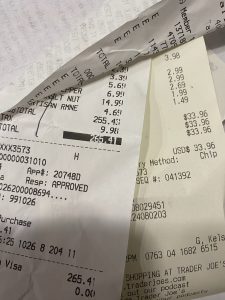
Receipts add up quickly
Photo Source: Heidi Copeland
In 2019, according to the National Retail Federation’s annual survey, U.S. consumers spent $2.6 billion on Halloween candy alone, about $25 per person. This does not even take into consideration all the other bits and pieces that can go into more elaborate Halloween celebrations: decorations, entertainment and activities, costumes (for kids, adults, and animals), cosmetics, food and drink, and even stationery such as cards and party invitations. Overall, Halloween retail spending was estimated at $8.8 billion in 2019.
Next in line are the winter holidays. These include Thanksgiving, Black Friday, Small Business Saturday, Cyber Monday, Super Saturday, and Christmas. Even with the Covid-19 quarantine, consumers are on track to start the 2020 seasonal spending spike. For many, Covid-19 has provided a state of anxiety, isolation and uncertainty. The upcoming seasonal events can be a big boost in providing a bit of nostalgia, normalcy and fun.
It is important, however, to heed the words of The Cat in the Hat: It’s fun to have fun, but you have to know how!
The truth is the US economy thrives on consumer spending! But, be honest, does derailing your budget for stuff you might have to pay for later really make you feel better? Seasonal spending is the type of spending that can lead families into the New Year with stress and anxiety. Be aware of spending temptations and triggers.
Wikipedia defines temptation as a desire to engage in short-term urges for enjoyment. Anything that promises pleasure can be tempting. Triggers are a stimulus that alerts your brain and body to an old, known experience, which makes it more likely that we will engage and buy something.
For example, a trigger could be a smell. You might think, “I smell cinnamon. Cinnamon reminds me of fall at grandma’s. Her house always smelled like cinnamon.” The temptation would then be: “Cinnamon brooms are at the check-out cashier. I think I will buy one.”
Recognize what sets you up – smells, prices, product placement, etc. There is a method behind the madness of marketing, all of which is geared to attract a consumer to make a purchase. This year especially, anything that offers nostalgia, normalcy, or fun will be a hot commodity.
Knowing your values and goals, and creating a plan for spending (budget), will help you organize your spending. Know, too, it is reasonable to spend money on fun stuff this season of spending. But also remember: happiness is a sense of well-being, joy, or contentment. It is very hard to buy that!

by Heidi Copeland | Sep 25, 2020
Deep regret and guilt are feelings I experience every time I throw something away in my pantry or refrigerator that I have not quite exhausted. What stays? What goes? Does an expiration date really tell you the WHOLE story?
According to the United States Department of Agriculture (USDA), under the jurisdiction of the Food Safety and Inspection Service (FSIS), manufacturers put dates on food products to let retail stores and consumers know how long their products are expected to be their best quality. Except for infant formula, product dating is not required by Federal regulations.
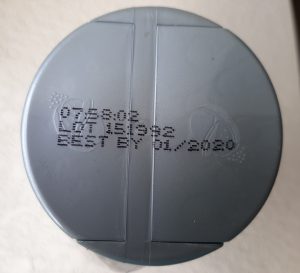
“Best By” date refers to product quality, not safety. Photo source: UF/IFAS NW District
BEST apparently has many interpretations. Food items only need to be labeled in a manner that is truthful and not misleading and in compliance with FSIS regulations.
Many factors determine these quality dates. Additionally, manufacturers and retailers follow strict procedures in the manufacturing, distribution, and storage of food products. However, there is no strict rule to dictate what BEST practices need to be followed once the food leaves the distribution chain and enters, most specifically, our homes. Because of this, food product dating errs on the side of caution.
It has been suggested that date labeling on food products results in consumer confusion and can result in the extraordinary amount of waste at both the retail and consumer level (>30%). Thus, it is important that consumers understand the dates applied to food are for quality, not for safety. The USDA even recognizes that food products are safe to consume past the date on the label, and, regardless of the date, consumers should evaluate the quality of the food product prior to its consumption.
However, it is up to the consumer to understand the significance of product dates and handle food products appropriately.
- “Best if Used By/Before” date indicates when a product will be of best flavor or quality. It is not a purchase or safety date.
- A“Sell-By” date tells the store how long to display the product for sale for inventory management. It is not a safety date.
- “Use-By” date is the last date recommended for the use of the product while at peak quality (it is not a safety date except when used on infant formula).
- “Freeze-By”date indicates when a product should be frozen to maintain peak quality. It is not a purchase or safety date.
- Can codes are a type of closed dating which enables the tracking of product in interstate commerce. These codes also enable manufacturers to rotate their stock and locate their products in the event of a recall. Can codes appear as a series of letters and/or numbers and refer to the date the product was canned. The codes are not meant for the consumer to interpret as a “Best if Used By” date.
Canned goods must exhibit a code or the date of canning. Cans may also display “open” or calendar dates. Usually these are “Best if Used By” dates for peak quality. Discard cans that are dented, rusted, or swollen. High-acid canned foods (e.g. tomatoes and fruits) will keep their best quality for 12 to 18 months; low-acid canned foods (e.g. meats and vegetables) will keep for two to five years.
Additional information on food canning and the handling of canned foods may be found at Shelf-Stable Food Safety.
- Bar Codes on Food Packages are commonly referred to as Universal Product Codes (UPC) and are a type of code that appears on packages as black lines of varying widths above a series of numbers. The UPC is not required by regulation, but manufacturers print them on most product labels because scanners at supermarkets can “read” them quickly to record the price at checkout.
UPCs are also used by stores and manufacturers for inventory purposes and marketing information. When read by a computer, a UPC can reveal such specific information as the manufacturer’s name, product name, size of product, and price. The numbers are not used to identify recalled products.
- Dates on Egg Cartons can indicate either a “Sell-By” or “Expiration” (EXP) date. It is not a federal regulation, but may be required, as defined by the egg laws in the state where the eggs are marketed. Some state egg laws do not allow the use of a “sell-by” date.
Many eggs reach stores only a few days after the hen lays them. Egg cartons with the USDA grade shield on them must display the “pack date” (the day that the eggs were washed, graded, and placed in the carton). This number is a three-digit code that represents the consecutive day of the year starting with January 1 as 001 and ending with December 31 as 365. When a “sell-by” date appears on a carton bearing the USDA grade shield, the code date may not exceed 30 days from the date of pack.
In the United States, after purchasing eggs, it is recommended to refrigerate them in their original carton and place them in the coldest part of the refrigerator, not in the door due to loss of coolness from repeated opening of the door.
The restaurant industry standard, first-in, first-out (FIFO), is also a quick and easy way for the consumer to keep track of their food freshness. FIFO simply means to use food in order of freshness dates. Following the FIFO principle ensures foods with the shortest shelf-life get used first (a permanent marker can help, too).
Throwing something away takes little effort. However, knowing what to keep takes more than a discriminating eye and a keen sense of smell. The Kitchen Companion is a great downloadable resource and reference guide for consumers who are attempting to reduce their own kitchen waste without regret and guilt.
Learn how to be safe, not sorry, without the regret of being wasteful with food products in your home.
Sources:
https://www.fsis.usda.gov/wps/portal/fsis/topics/food-safety-education/get-answers/food-safety-fact-sheets
https://www.fsis.usda.gov/wps/wcm/connect/6c55c954-20a8-46fd-b617-ecffb4449062/Kitchen_Companion_Single.pdf?MOD=AJPERES
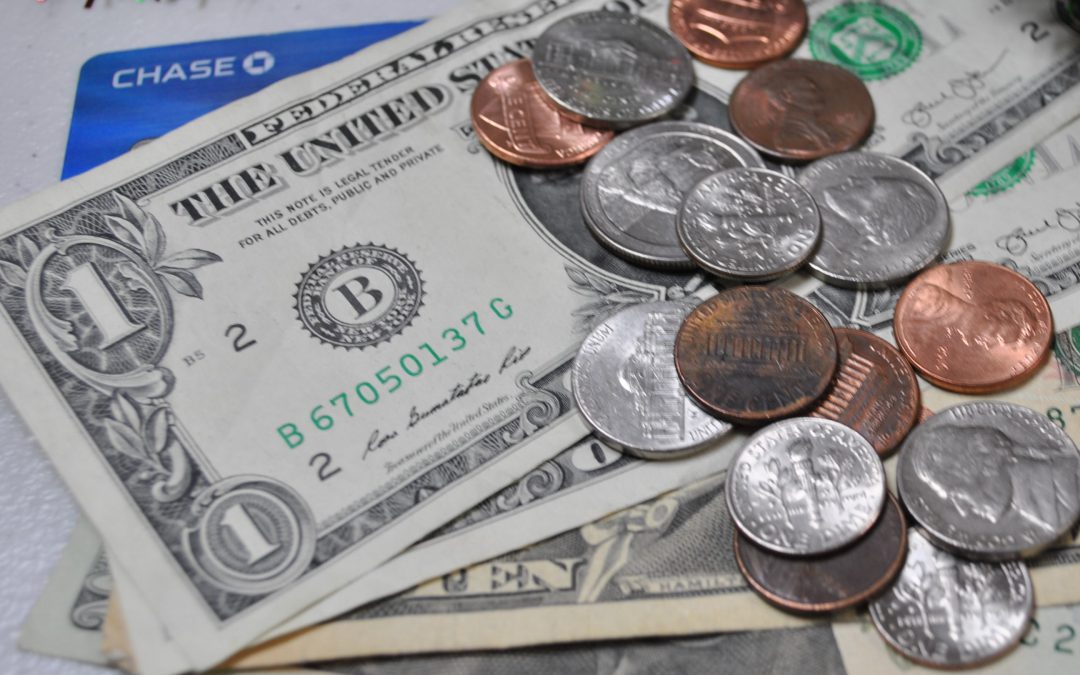
by Laurie Osgood | Jul 16, 2020

Lately, scammers have gotten more sophisticated. So it’s worth reminding everyone that if you receive an unsolicited email, text, or phone call, DO NOT give out any of your personal information! Scammers often update their tactics, using any way they can to trick you into handing over your precious personal information.
Earlier this week, I received an email (see below) telling me I had successfully set up a mobile wallet using my bank account. Since I had not signed up for this service, I was tempted to call the phone number listed in the email to dispute it. I hesitated, and for good reason. If I had contacted them, they would have tried to get my personal identification information, and then used that information to steal my identity or bank funds. I called my bank directly and learned this scam was recently perpetrated against 40,000 debit card users.
Phishing emails and text messages often appear to be legitimate and from a company you know or trust (like my own bank). These phishing emails and text messages often describe a problem with your billing, to trick you into clicking on a link or an attachment.
REMEMBER, if you receive this kind of message, by email or text, do not click on any attachments or call the phone number that is listed.
The Federal Trade Commission’s (FTC) Consumer Information page offers these tips for consumers to recognize and avoid phishing scams. View their website for more information. https://www.consumer.ftc.gov/topics/privacy-identity-online-security.
- Protect your computer by using security software.
- Protect your mobile phone by setting software to update automatically
- Protect your accounts by using multi-factor authentication
- Protect your data by backing it up
Lesson learned? Protect yourself and don’t believe anything that doesn’t feel right!
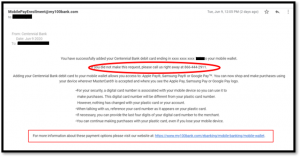
For more information about protecting yourself and your finances, contact your local UF/IFAS Extension Agent.
Extension classes are open to everyone regardless of race, creed, color, religion, age, disability, sex, sexual orientation, marital status, national origin, political opinions or affiliations.

by Julie McMillian | Jun 22, 2020

Today’s Climate
Photo Source: UF/IFAS Photo Database
Many confuse the two words climate and weather. Weather is the day to day conditions of our atmosphere. Whereas, climate refers to the average of the weather over time. Weather depicts how we dress day to day and can change often. Climate refers more to the average weather over time. We generally must prepare for our climate by buying appropriate clothing and preparing our home for longer term weather conditions.
What causes the climate to change? There are three important greenhouse gases that have dramatically increased since industrialization: carbon dioxide, nitrous oxide and methane. The increases are primarily due to our changes in land use over time. These factors make our earth’s surface temperature warmer which affects our loss of sea ice and longer fire seasons, and can contribute to extreme weather events.
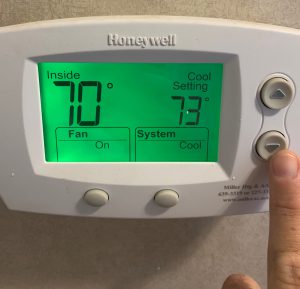
Adjust the temperature
Photo Source: Julie McMillian
The question is, what can I do in my own world and community to help on an individual basis? There are several ways that we can reduce our energy use of electricity at home which will help us to contribute to the bigger picture. Some simple suggestions are when you are not using the television, computer, lights, heating and cooling, try to turn them off or down for a while. Purchasing shades or curtains for your windows can keep your house cooler in the summer and fans may be able to replace the air conditioner on some occasions. When running the air, heat or hot water heater check your thermostat for energy saving features. Try to only run the dishwasher or washing machine with full loads and be sure to clean out your lint trap in the dryer so it has good airflow. You will find you might even save a few dollars by being mindful of your energy consumption.
Next, let’s talk about reducing greenhouse gases in our yards. Composting food scraps is a great way to reduce waste from landfills and turns your waste into reusable soil. Planting trees and plants helps to reduce carbon dioxide in the atmosphere. Plants store carbon and help to regulate temperatures in the home. Another thing to consider is, where does your water run off go? If water can be routed to your garden it is a win-win.
How do we plan our food system in our home? Reducing food waste has many benefits. We can save money, help our community, conserve energy and resources just by rethinking the way we plan our meals. If we buy more unprocessed foods, there will be less packaging. If we are able to grow our own food or just eat at home more, it cuts down on trips to restaurants and stores.
These are just a few ways to get you thinking about climate change in Florida. As a citizen, we can take action by staying informed and showing our support. If we hold ourselves accountable by looking at our personal impact, we may be surprised what we are leaving behind with our footprint. For more information on healthy living or other extension related topics, contact your local UF IFAS county extension office.
Supporting information for this article can be found in the UF/IFAS Extension EDIS publications:
Science Support for Climate Change Adaptation in South Florida
Climate Change Adaptation: New Perspectives for Natural Resources Management and Conservation
Energy Efficient Homes
UF/IFAS Extension is an Equal Opportunity Institution.

by Laurie Osgood | Mar 26, 2020

The goal of National Healthcare Decision Day is to inspire Americans to communicate their end-of-life wishes about healthcare with their families and healthcare providers.
Although making healthcare decisions is often a difficult process, making decisions for others is even more complicated.
According to the 2018 Conversation Project national survey, Americans are becoming more comfortable talking to their loved ones about their end of life wishes. Over half (53%) of Americans say they would feel relieved if a loved one started “the Conversation.”

Start the family “conversation”
Photo Source: Laurie Osgood
Once you have initiated the conversation, experts recommend creating an advance care directive. Advance care directives are legal documents that are used to secure your decisions about end-of-life care, to avoid confusion and uncertainty later on. These legal documents can include a living will, health care proxy, health care power of attorney or instruction directive. Having an advance care directive in place will help make sure that your wishes about your health care are fulfilled, even if you are no longer able to communicate your wishes.
Don’t wait for “the right time” to talk with your family, everyone should plan for their future, before a crisis arises.
There are many tools and online resources that can help you and your family begin this important conversation.
To learn more about National Healthcare Decision Day and advance care directives. Visit NHDD.org.

by Samantha Kennedy | Mar 19, 2020

The deadline for filing your federal income tax return is April 15, 2020. (Photo source: IRS.gov)
The IRS has identified a new version of a phishing email scam targeting tax professionals. The fake email states the preparer’s EFIN has been put on a temporarily hold and warns the EFIN will be suspended unless the preparers open an embedded document and confirm or deny that they submitted the Form 1040. The embedded “1040” document likely contains malware.
The IRS reminds all tax professionals that they are targets of cybercriminals seeking to steal client data or the practitioners’ identities. Thieves use many variations of phishing emails such as this. The fake emails are characterized by an urgent message (your EFIN will be suspended) and try to entice recipients to open a link or attachment. The IRS urges all tax professionals to be on alert and take security steps to protect their clients and their businesses. Review Publication 4557, Safeguarding Taxpayer Data, for how to be safer.
Some simple steps include:
- Using the multi-factor authentication option offered by tax software to protect accounts from unauthorized access.
- Use strong password protections on all devices.
- Never open suspicious emails, links and attachments may carry malware.
- Use strong security software and keep it updated.
For more information, please visit https://www.irs.gov/.















